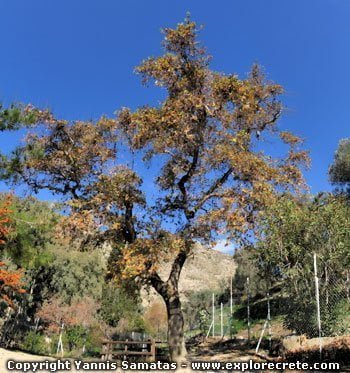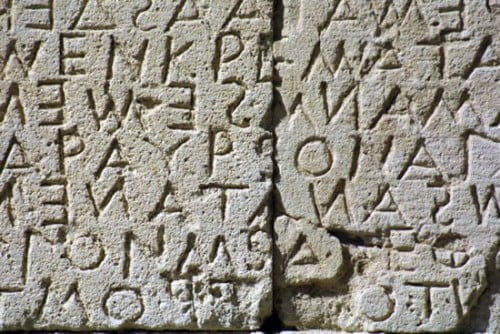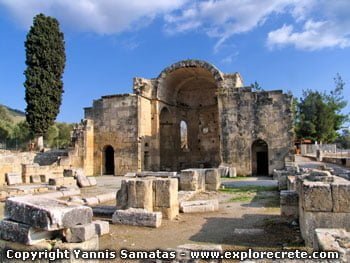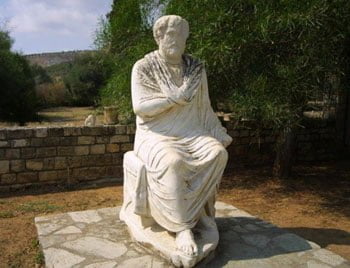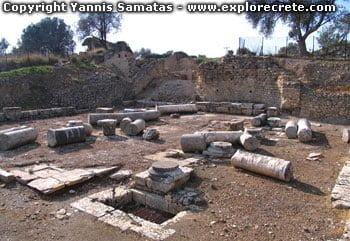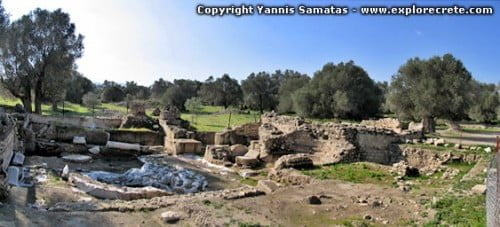Destruction of the Minoan Civilization
Since the archeological pickax unearthed the first findings of the Minoan Palace in Knossos, almost 100 years ago, the cause of the destruction of the Minoan Civilization has been a subject of controversy and dispute among scientists.
The Minoan Civilization flourished 5000 years ago
The Minoan Civilization was a Bronze Age civilization that arose in Crete and flourished almost 5000 years ago, until it was destroyed in 1450BC. The Minoans were enigmatic people; educated, warriors and merchants, artists, and experienced sailors. Their maritime empire was vast.
They were the first in Europe to use a written language, referred to as Linear A, which was finally decoded just a few years ago. They were different than Greeks and dominated the Mediterranean Sea, especially since they were not menaced by external forces from the Greek mainland or elsewhere.
All of a sudden though, at the height of its power, the Minoan Civilization was destroyed and perished forever, leaving important samples and tokens of its grandeur. The inexplicable end of this civilization made many archaeologists, among which Professor Marinatos and Evans, to associate it with the eruption of the Santorini Volcano.
Is Crete or Santorini the lost Atlantis?
Many scientists and archeologists associate Minoan Crete with the lost Atlantis, partially counting on the words of Plato, whose descriptions fit the findings and evidence of the Minoan Civilization.
Our records show how your city checked a great power which arrogantly advanced from its base in the Atlantic Ocean to attack the cities of Europe and Asia. For in those days the Atlantic was navigable.
Platon
Since Platon described the story of Atlantis, numerous myths, legends, and scientific studies have appeared. Many people believe that Atlantis is located in Greece –maybe in Crete, or Santorini. Or even at the Gibraltar. Or maybe, Atlantis is just a myth. In any case, this story fascinates and intrigues numerous people all over the world.
The Eruption of the Santorini Volcano and the destruction of the Minoan Civilization
Somewhere between history and myth lie two historical events of immense importance that shook up and overwhelmed the Hellenic grounds: the destruction of the Minoan Civilization and the eruption of the Santorini Volcano, almost 3,500 years ago. Since Evans discovered the lost Palace of King Minos in Crete, archaeologists and scientists have been trying to connect the two events.
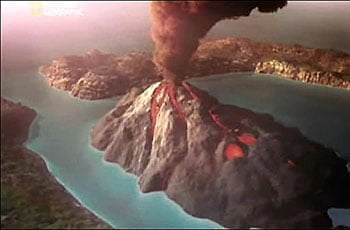
The predominant theory regarding the destruction of the Minoan Civilization has been – for years – that it was provoked by something as violent and as sudden as the eruption of Santorini Volcano. Originally it was believed that the eruption took place in 1450 BC, when the Minoan Civilization perished, but newest findings and theories set it somewhere between 1627BC and 1600BC.
The cosmogonic event of the eruption has perplexed historians for years. Until today, the scientific world is trying to explain and reconstruct the sequence of events that lead to the destruction of the Island of Thira (Santorini) and probably devastated the Minoan Civilization. The Volcanic ash from the Santorini Volcano covered Akrotiri in Thira and reached the Cretan shores. Was it enough though to wipe off map the Minoans?
Minoan Civilization destroyed by Tsunamis
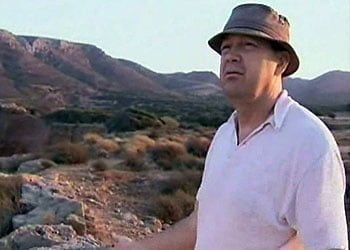
For many years, the views and theories of archaeologists have diverged. Relatively recently though, new discoveries in Palaikastro in Crete give us enough hints for a plausible explanation.
Archaeologist Stuart Dunn suggests that the volcanic ash from Santorini obviously shadowed Crete for a few days, but under no circumstances destroyed the Minoan Civilization.
The archaeologist Sandy McGillivray, who studies the Cretan Civilization and its destruction, called in Hendrik Bruins from the Ben Gurion University in Israel to examine the soil in Palaikastro and the coastal sites of Crete, close to the famous palm forest in Vai.
Hendrik Bruins took some soil samples which showed sea microorganisms and species, in places that no known phenomenon could explain their existence.
The experts found deposits of stone and pottery, in pieces or powered, and lots of lumps of volcanic ash. They also discovered foraminifera, tiny marine organisms, usually found only on the seabed, and coralline algae, elements that cannot be seen on the mainland.
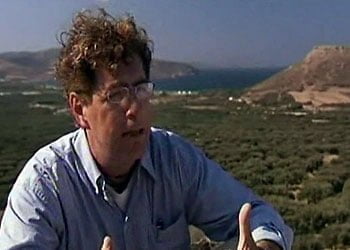
Many kilometers away from Palaikastro, in Amnissos, the port of Knossos, the scientists examined findings that also contained ash, marine species, cattle bones, floor and wall plaster, pumice and seashells. They figured out immediately that this could be explained only by a massive and sudden inflow of water and they called in Kostas Sinolakis, a tsunami expert.
The only way they could have been deposited on the land of Crete was by a tsunami. The tidal wave caused by Santorini Volcano travelled and hit the shores of Crete, destroying the plantations, the crops, the ships and commerce, devitalizing and deviating the Minoan Civilization. The Minoan ports and infrastructures were destroyed by the 50 feet waves and were never rebuilt.
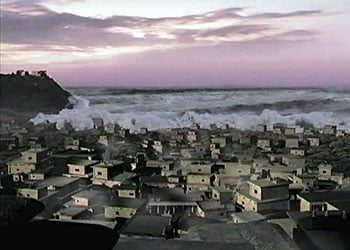
Based on highly accurate and specialized software, Dr Sinolakis managed to reconstruct and enact the way that this tsunami travelled across the Aegean building a full picture of its scale and impact.
Using radio carbon techniques they compare the geological findings with the eruption era; all pieces are finally falling into place.
The conclusion was horrifying: not only one, but several successive tsunamis, of more than 50 feet were hitting the Cretan shores, every thirty minutes. Minoans could not have known what fate had written for them.
We can just imagine the terror; these people had run away, maybe some of them were coming back to help the wounded or find family members; they were there watching more waves coming in.
This was something that happened over and over again, destroying completely the northern and eastern shores of Crete.
Crete is a large island though; the palaces and settlements in the interior of the island were almost intact, as were the south and west coast.
Invasion by Mycenaeans – Complete destruction of the Minoan Civilization
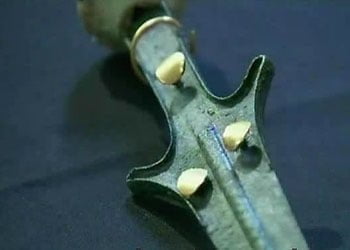
Archaeologists have now enough evidence to believe that the reputed Minoan Civilization was severely damaged and affected by the eruption of Santorini Volcano, which destroyed their fleet.
Prosperity and safety of the Minoans relied on their ships; since their main means of existence and defense were afflicted, Minoans became an easy prey for the Mycenaean invaders that came to island from the Greek Mainland.
Minoans did not disappear overnight; they became ripe for attack by ferocious enemies. In Palaikastro, archeologists found depredated and ravaged statues and monuments, while in Western Crete, closer to Chania, tombs of the same era with bodies and weapons not belonging to the Minoans were unearthed.
Many years passed until the Minoan Civilization was completely destroyed. It is estimated that the palaces of the Minoan Civilization were destroyed almost 150 years after the volcanic eruption.
Even if we never discover if Plato’s words were allegoric or prophetic, or if Atlantis ever existed, the studies and combinations of evidences give us satisfactory and realistic answers on the downfall of one of the most important European Civilizations.
Link: Video about studying and researching the destruction of the Minoan Civilisation
© explorecrete.com All Rights Reserved. Reproduction or copying without permission is prohibited.

